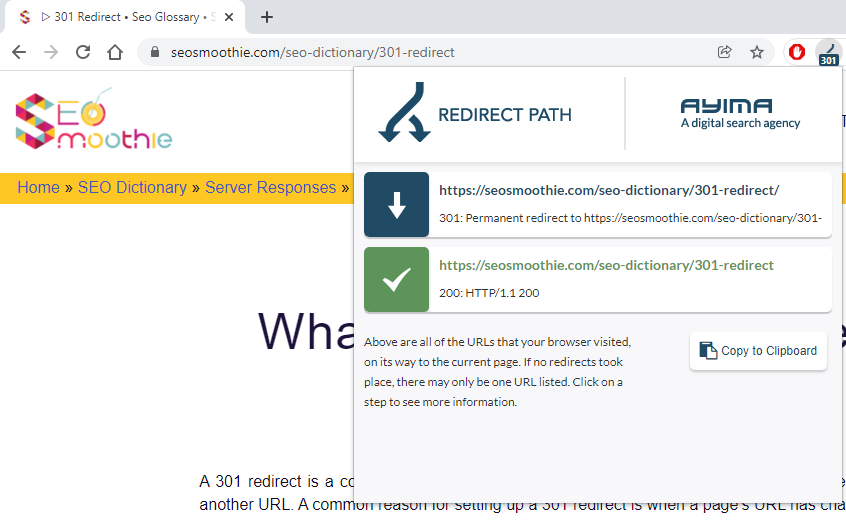What is 301 redirect? Meaning and Definition.
A 301 redirect is a command performed by web servers (eg Apache, IIS, etc.) that redirects browsers requesting a certain URL to another URL. A common reason for setting up a 301 redirect is when a page’s URL has changed.
To ensure that internal and external links to the original URL continue to show visitors the original page, a 301 redirect is configured and the web server redirects traffic from the old URL to the new one.
According to John Mueller of Google, a 301 redirect will pass the PageRank to the new URL.
The free Google Chrome Redirect Path extension can be used to quickly check the response status code from a server for an individual URL.

You might also be interested in:
What is Noindex?
What is Redirect?
What is HTTP Header?
What is 404 Error?
What is Soft 404 Error?
301 redirect FAQ
Are 301 redirects bad?
Pages with 301 status codes do not technically exist and there is no point Google to crawl them. 301 Redirects are considered best practice in SEO. When executed properly, redirects will not harm your SEO rankings at all.
How many redirects is too many?
Don’t use more than 3 redirects in a redirect chain.
What is a 301 redirect?
A 301 redirect is a permanent redirect that passes all the ranking power to the redirected page.
